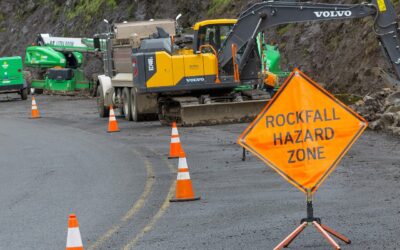As 2026 approaches, transit-oriented development (TOD) continues to gain traction in cities throughout America. Federal funding support is holding steady, and new financing tools are available to broaden the field for planners, builders, and public agencies.
The Federal Transit Administration’s Pilot Program for TOD project planning remains funded for fiscal year 2026 and larger federal programs, such as the Capital Investment Grants and Expedited Project Delivery pipelines, are moving forward with 2026 project recommendations. The U.S. DOT expanded its TIFIA loan program in July 2025 and now up to 49 percent of eligible project costs are covered. That change directly benefits mixed-use and station-area developments.
TOD initiatives in cities are increasingly being used to address housing shortages and infrastructure needs. Local government officials are pairing transit expansion with mixed-use communities and affordable-housing goals.
The larger question, of course, is what happens after 2026. The Infrastructure Investment and Jobs Act (IIJA) will expire on Sept. 30, 2026, and after that, congressional reauthorization will be required to maintain funding for the TOD projects. While the Trump administration and the current Transportation Secretary Sean Duffy have maintained TOD eligibility and emphasized project financing, the size and direction of federal investment beyond 2026 will depend on the next transportation bill passed by Congress.
For now, however, planners and developers can expect stable funding and expanded credit options. And while there will likely be changes of some sort related to scale, credit options, and priorities in 2027 and beyond, there does not appear to be a retreat in site for transit-oriented growth. The following upcoming contracting opportunities are similar to many more currently in the planning and design phases throughout the country.
Officials in the city of Aberdeen, Maryland, have announced a $55 million TOD project that will transform the area surrounding the Aberdeen Maryland Area Rail Commuter and Amtrak station. The project will be designed to deliver a safer, more accessible multimodal hub that connects the city’s east and west sides. Currently, the city is divided by the rail corridor and the new public infrastructure that this project delivers will provide a new space to support a mixed-use redevelopment area that will include housing.
The effort will remove an obsolete pedestrian overpass and replace it with a new ADA-compliant underpass that features new terraced plazas, sidewalks, and landscaping. The underpass enhancements will improve the attractiveness of the connectivity between downtown Aberdeen and the station area. Additional project components will include new bus bays to accommodate the additional bus routes. An existing gas station will be demolished to clear key parcels of land, and the surrounding street grid will be reworked to restore safe, direct cross-town access. Construction is anticipated to begin late in 2027 or early 2028.
Officials in Gwinnett County, Georgia, will soon launch a $30 million transit center modernization project. A new facility will be located next to the county’s Global Villages redevelopment, which is a separate mixed-use community. This effort will provide another part of a larger transit-oriented county development initiative.
This initiative will be completed in two phases. Phase one will add a new customer service center, a ticket counter, and upgraded public restrooms. Phase two will include new county office space and facility-wide upgrades designed to improve safety, cleanliness, and accessibility. The updated transit center will cover more than 10 acres and serve local and commuter bus routes. It will also provide new micro-transit options for residents and visitors of Global Villages. Design work for the transit center is underway and construction on phase one of the effort is expected to start within the next two years. A solicitation schedule will be finalized as design and engineering progress.
Officials in New York City are planning a $413 million project that will provide infrastructure and other community initiatives to support the city’s Jamaica Neighborhood Plan. Council members authorized the rezoning that must occur and made a financial pledge for the comprehensive package of utility and public-realm improvements that will be required. The authorized investments together represent one of Queens’ largest neighborhood-scale, transit-supportive initiatives in recent history.
Significant improvements will be made to the water and sewer systems, and the streets will be made safer. Access to the station will be improved and new and enhanced parks and open spaces will be created. Other upgrades will include investments in community, health, safety, and educational facilities for the area. The site will be developed to facilitate future mixed-use and affordable housing near the public transit station. Residents will also have upgraded bicycle, pedestrian, and streetscape areas surrounding Jamaica Station and nearby subway hubs.
The project will be completed by phased components over several years. Design work and the scoping phase are currently underway. Solicitations will be released after design standards are established in late 2026 or early 2027 but there will be additional contracting opportunities that could last for several years because of the phased delivery model that has been structured.
Officials at the Seattle Housing Authority in Washington will allocate $20 million to a mixed-use, transit-oriented redevelopment project located next to Sound Transit’s Northgate Link light-rail station. The current site will be redeveloped into a walkable, higher-density community complex to serve current and future residents of the area.
Up to 1,400 mixed-income homes will be constructed in this new development area, which is located near the transit station. Green infrastructure for stormwater management will be included along with pedestrian-friendly streets, protected bike connections, and new public open spaces. Improvements to the streetscape and utility systems will improve access, according to authority officials. Planning and pre-demolition work are now underway with design and permitting to come later. Demolition will start in 2026 and as the buildout work progresses, additional solicitations for subsequent phases will be released.
Taken together, these projects illustrate how transit-oriented development has matured from an urban design concept into a practical economic tool that connects infrastructure funding, housing production, and long-term community value. Even with federal reauthorization looming, the nation’s planners and builders are treating TOD as an essential framework for growth. It appears that 2025 has primarily been a year of preparation, positioning and policy fine-tuning with 2026 shaping up to be the year when shovels hit the ground.
Photo by Metropolitan Transportation Authority of the State of New York from United States of America, CC BY 2.0 https://creativecommons.org/licenses/by/2.0, from Wikimedia Commons







